
Intro
Most of our reviews are pretty long — and take a long time to produce — because we want to provide enough info for you to determine whether the gear we tested will work well for you.
But we get asked to check out an increasingly wide range of products, and sometimes, we just want to tell you about something we’ve been using and loving lately.
That’s where this monthly series — Stuff We Like — comes in. It’s where we keep you current on a broad range of things we’re digging. Check out this month’s submissions, and let us know if there’s any gear you’ve been loving!
Feedback Sports Pro Mechanic HD Bike Repair Stand
MSRP: $495
David Golay: I don’t remember exactly when I bought my first Feedback repair stand, but it has to be close to 20 years ago. And I’ve been using that same Ultralight Repair Stand ever since. With a few replacements of key clamp parts over the years, it’s held up remarkably well and still works great.
However, I recently decided to upgrade to the Pro Mechanic HD stand, mostly because I wanted something stiffer and more stable than my old Ultralight, and the Pro Mechanic HD is fantastic.
The Ultralight stand that I’ve been using for ages works well, but it forgoes some stiffness and stability in the name of being light and portable. Now, back when I was spending more time on sub-20lb XC hardtails and the “burly” Trail bikes of the time weighed 30 lb, that wasn’t much of an issue. In 2025, when the Enduro and DH bikes I gravitate toward are often pushing 40 lb, it started to be more of a limitation. With a heavy bike loaded up by the seatpost, the Ultralight’s clamp arm would sometimes slip and rotate the front of the bike downward, and with that much weight in the stand, a little bump would set it vibrating.
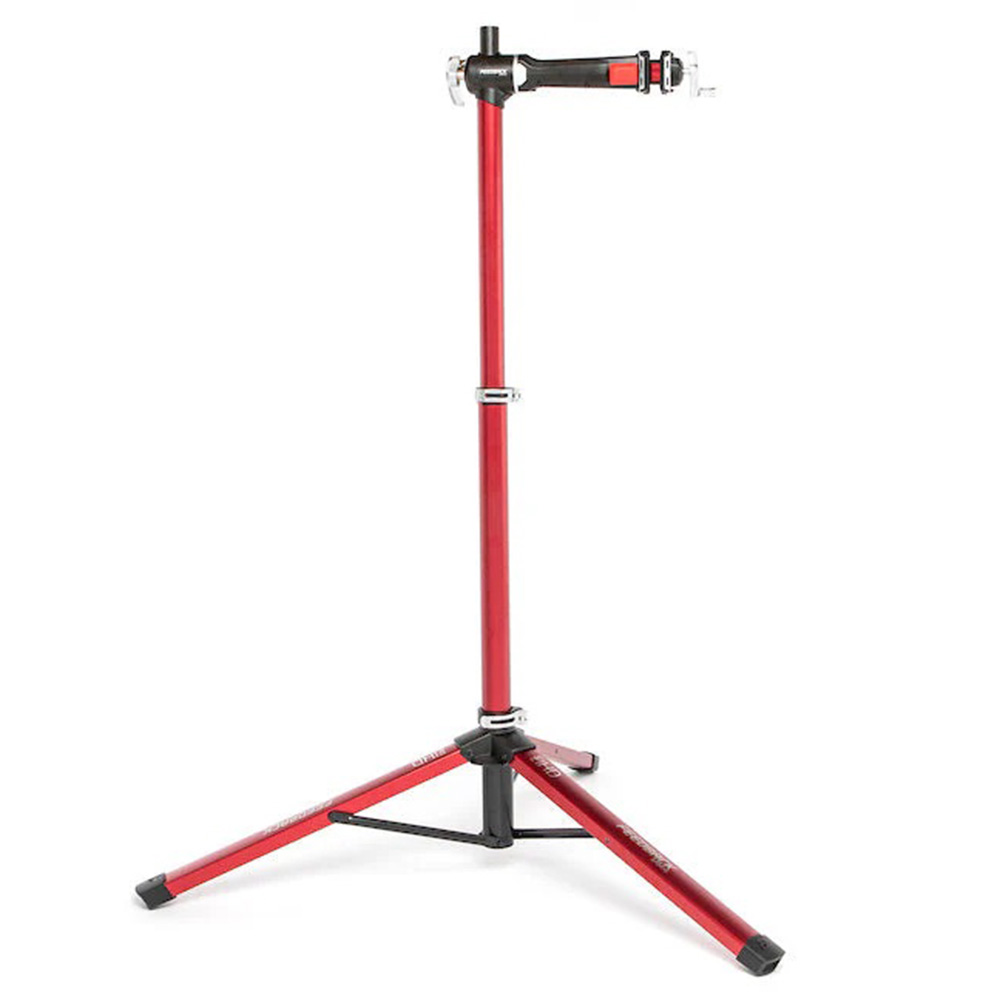
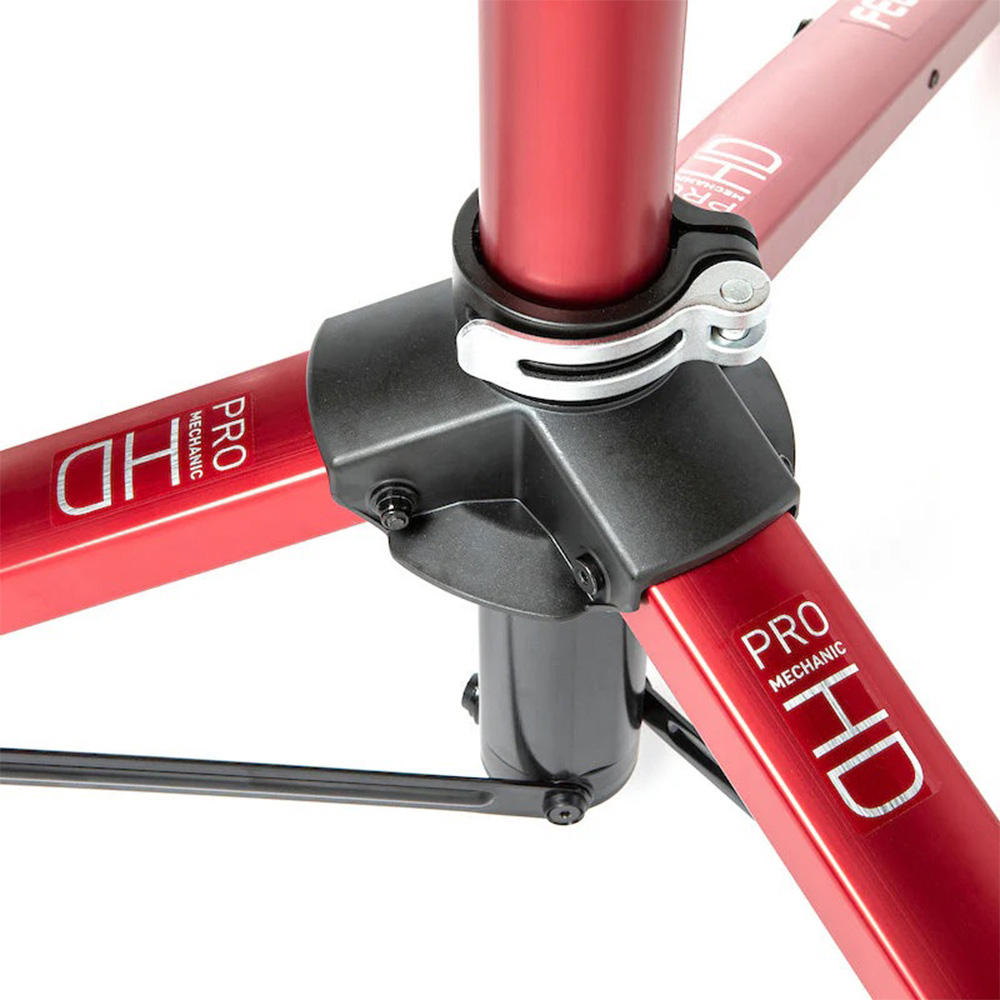
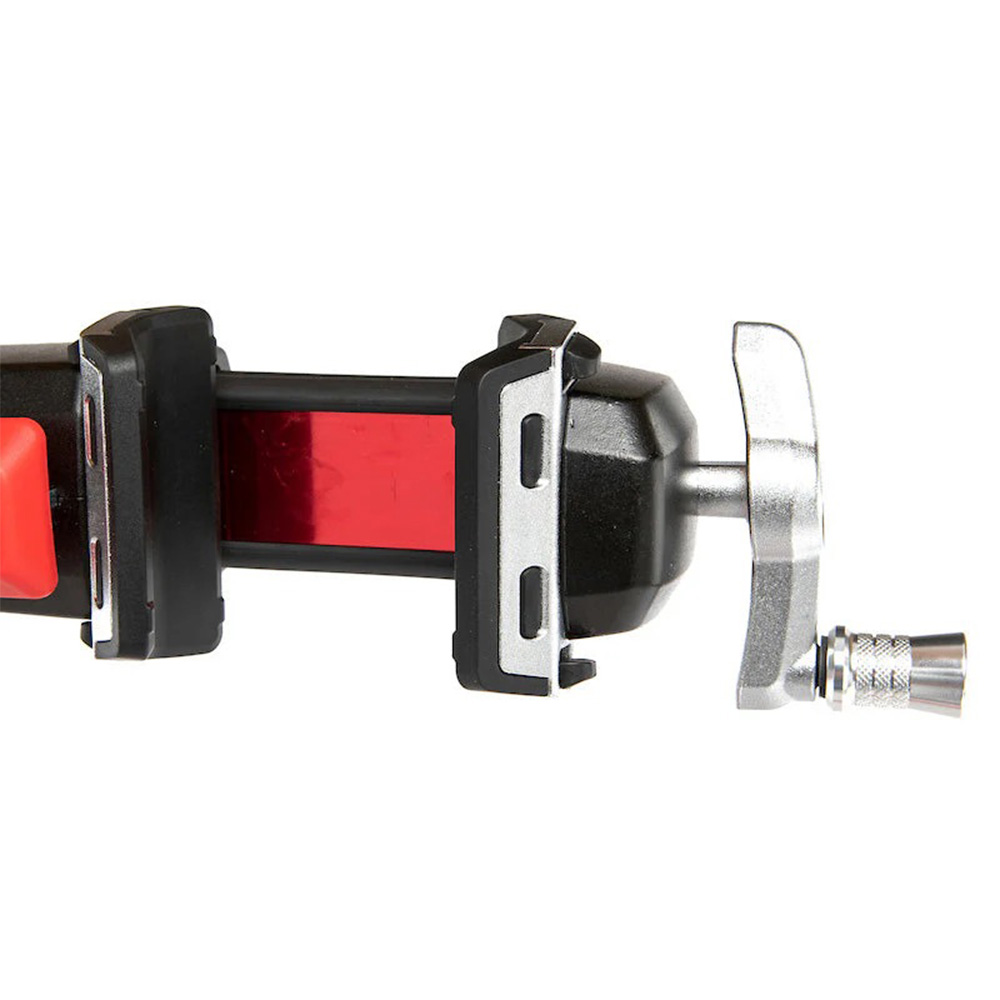
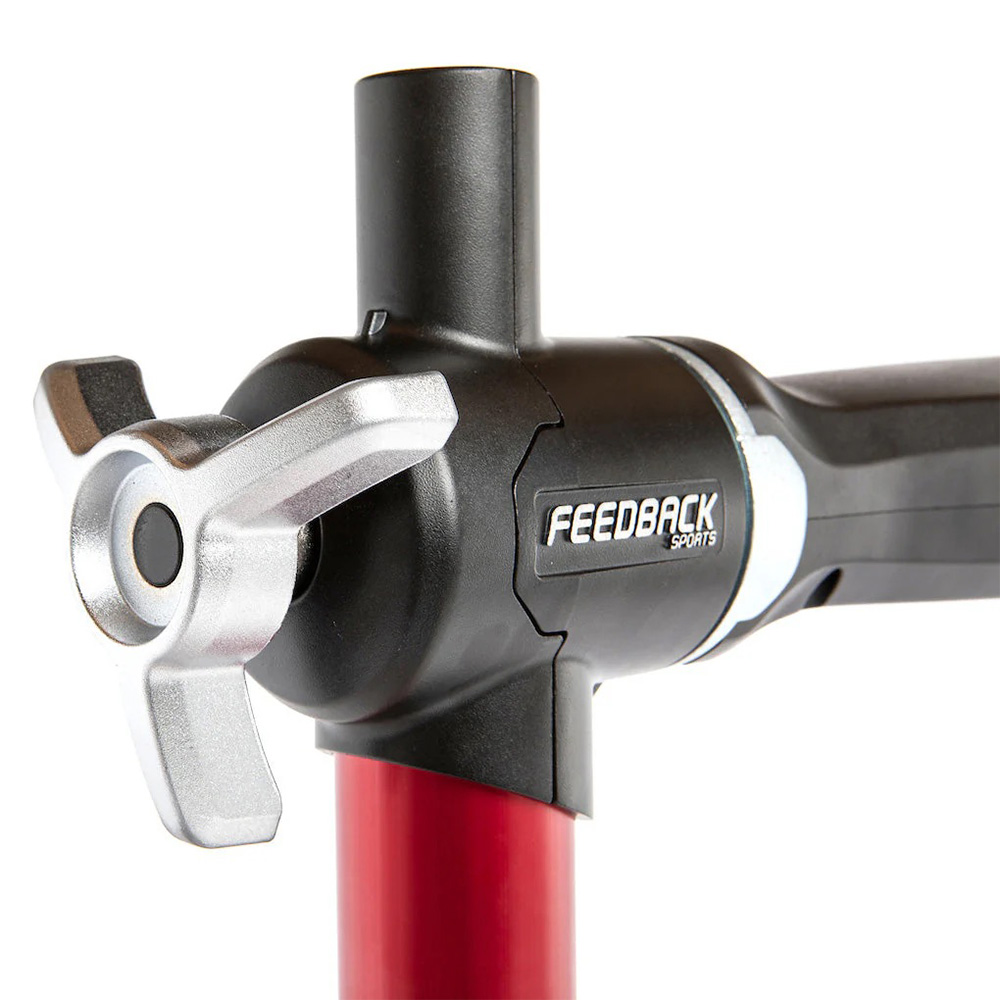
The Pro Mechanic HD, on the other hand, has no such issues. It’s rated to hold bikes up to 100 lb, and while I haven’t gotten remotely close to testing that limit, it’s extremely stable with a 40-lb bike loaded up, particularly for a folding stand.
Feedback’s ratcheting clamp mechanism was the biggest factor that drew me to their stands in the first place, and while the pared-down version on my old Ultralight works very well, the burlier, more fully-featured one on the Pro Mechanic HD is even better.
The way it works from a user standpoint is super simple. When it’s not under tension, the outer clamp jaw slides in and out freely; to secure a bike, you pull the jaw open, put the bike in place, push the jaw in until it’s loosely closed, and then turn the handle on the front side of the clamp until it’s tight. When the time comes to release the clamp, you back the handle off a couple of turns, then push the big red button on the back side of the clamp, and it pops fully open. It’s super quick, easy, and intuitive to use.
The Pro Mechanic HD also has a particularly high maximum clamp height for a folding stand. I’m habituated to working on bikes at a lower height than is probably typical for someone my height (6’ / 183 cm), following years of being a mechanic at a shop where the other mechanic / owner was about 8’’ shorter than me. But with the Pro Mechanic HD, there’s a massive amount of room to move the clamp higher than the height I’ve settled in on, which should be especially welcome for taller folks who haven’t gotten used to incrementally giving themselves sclerosis.
The Pro Mechanic HD is a big, heavy folding stand, so it’s not the best option for folks who will be travelling with it a ton and want to prioritize weight or compact overall dimensions. However, it is very quick and easy to fold up and deploy. Feedback also makes an updated version of the Ultralight stand that I used for decades, and a “Pro Mechanic” stand that slots between the Ultralight and Pro Mechanic HD in terms of size / weight / beefiness / cost.
For my purposes as a mostly static shop-based stand, though, the stiffness and stability of the Pro Mechanic HD are real assets, and I’ve still got my trusty old Ultralight for when I need something more portable. I’m a huge fan.
Tread Labs Women’s Salinas Sandal
MSRP: $130
Kristin Sinnott: While it’s not quite sandal season in Crested Butte, Colorado, it certainly was on my April vacation in Costa Rica. I packed two pairs of sandals for my trip: Tread Lab’s Salinas Sandal and the Birkenstock EVA Arizona. I’ve been a big Birkenstock fan for 30 years, and the EVA version of the Arizona has been my most recent go-to (my Birkenstock Floridas need to be resoled). As much as I love my Birkenstocks, there are times I want / need a more supportive footbed, better traction, and something more suitable for trails. The Salinas have filled that void and have a lot more to offer.
Back in the June 2024 edition of “Stuff We Like,” fellow reviewer Noah Eckhouse covered the Men’s version of Tread Labs’ Orleans thong-style sandal. As he mentioned, Tread Labs was founded by Mark Piagen, who also founded Chaco Sandals in the late 90’s. After selling Chaco and taking some time off, Mark founded Tread Labs, which focuses on offering good arch support in sandals and insoles.
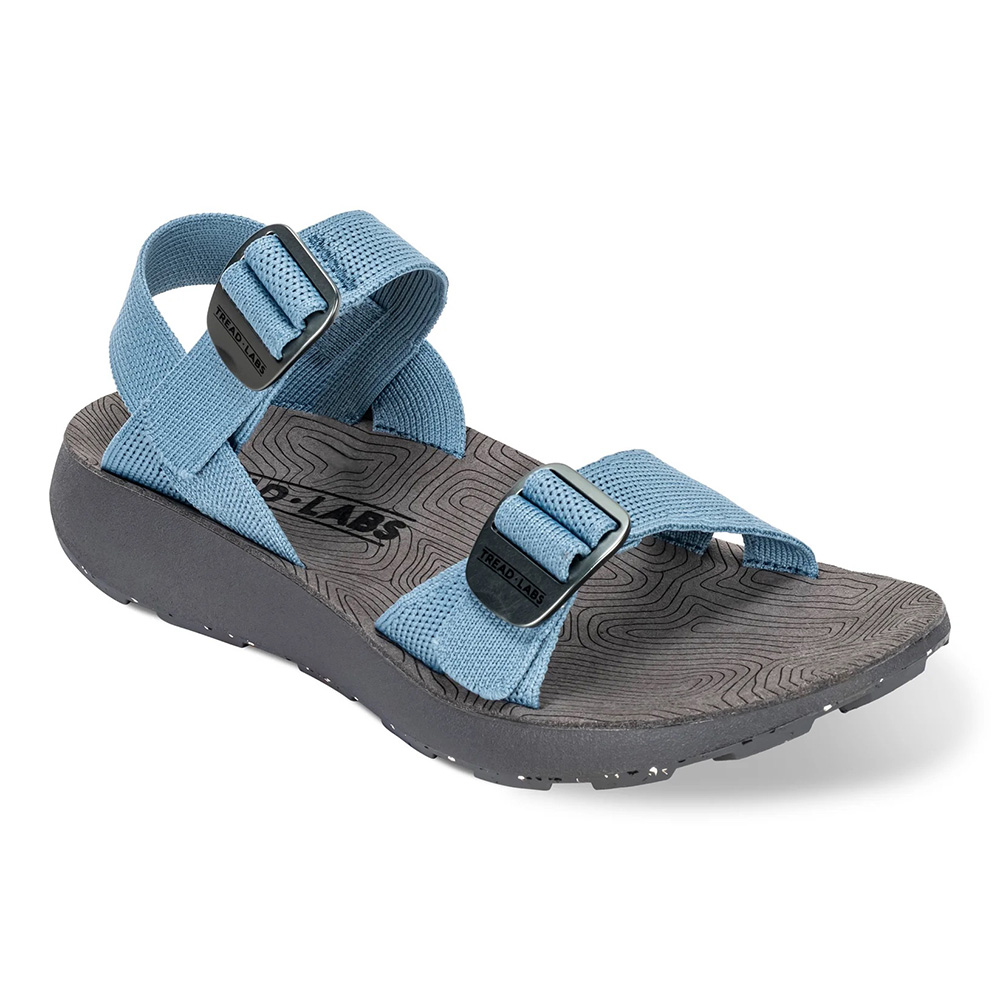
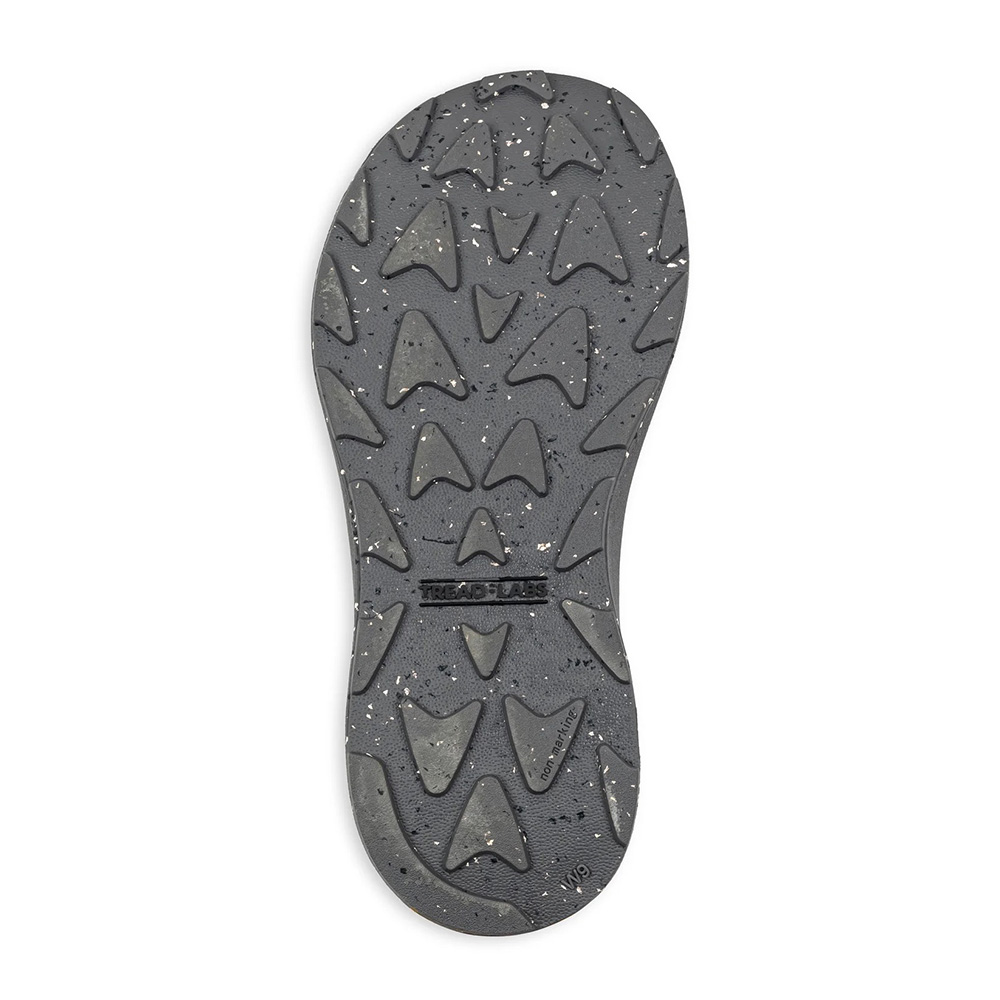
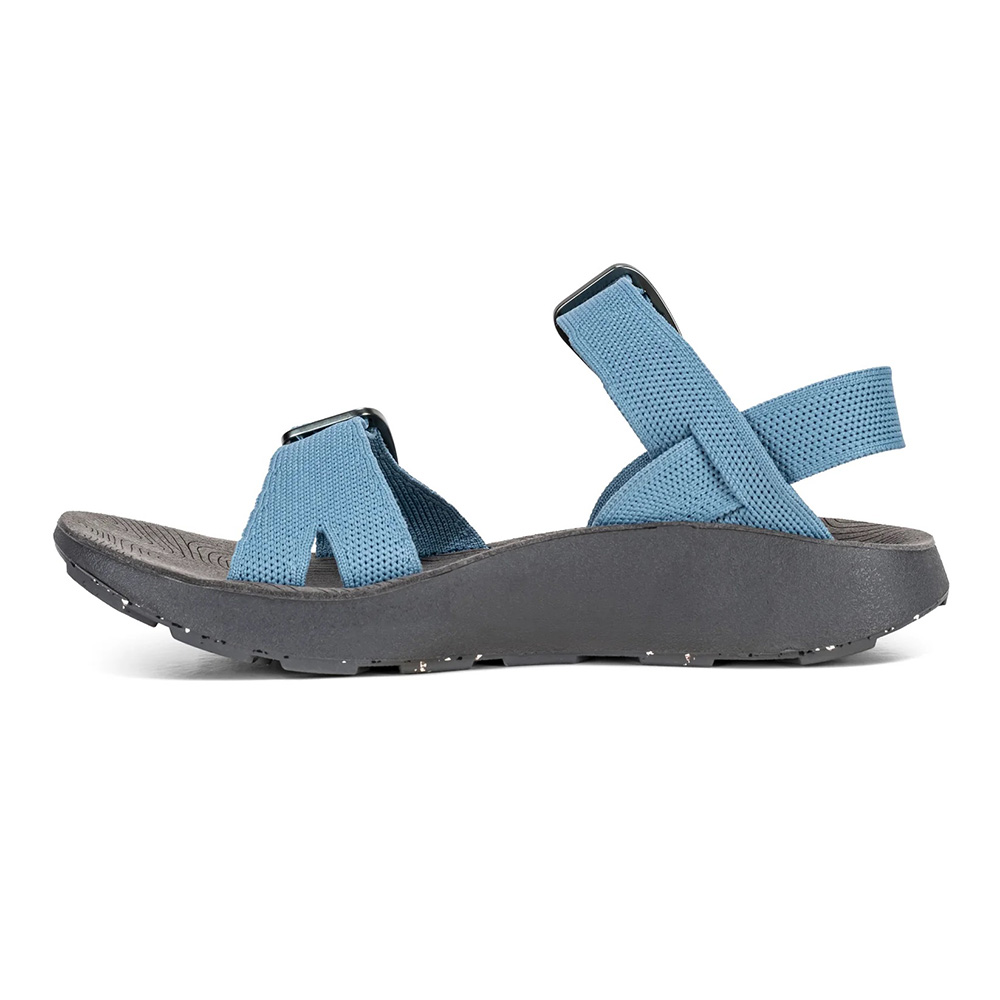
I generally don’t have issues with poor arch support in shoes or sandals, but when I put on the Salinas Sandals, they feel much more comfortable than just about any other shoe I own. I find I can wear them all day and night without my feet getting fatigued, and unlike my old Chacos the straps on the Salinas Sandal are stretchy and ‘give’ with my foot, so I don’t end up with blisters after my first day of wearing them each summer.
The Salinas sandal is water-friendly, machine washable, has adjustable straps, a cushy footbed, and offers good traction on most surfaces (dry or wet). I’ve been wearing the Salinas since last summer, and it’s held up great — the straps haven’t stretched out, and the footbed hasn’t compressed.
I wear the US Women’s size 9; for reference, I wear a mondo 24.5 in ski boots, a 39 for my Birkenstocks, and size 9 running shoes. The Salinas Sandal is offered in men’s and women’s sizing, and Tread Labs offers a few other sandal styles if you’re looking for a different strap / closure layout.
High Above Lost Lake Duffel
MSRP: $100
Zack Henderson: It feels like I’m constantly lugging around bike gear in various states of cleanliness, and the Lost Lake Duffel from High Above is often my container of choice. Design-wise, it’s very simple and meant to last — thick nylon webbing for the handles, perhaps the burliest YKK zipper I’ve ever seen, and an interesting mesh material for the bag body. There’s a single exterior pocket with a key clip inside, but otherwise, it just has one big main pocket.
The real asset here is the mesh construction. The bag doesn’t retain any moisture or dirt, which means it virtually never needs to be cleaned. I put muddy stuff in it without worrying about the duffel, since any excess dirt simply falls through the mesh. It also allows your stuff to dry much more easily, thanks to the open mesh allowing airflow, so I don’t need to be as worried about things getting funky if the bag is in my hot car for a day or two after a ride. The Lost Lake Duffel is handy for carrying wet ski gear for the same reason, and it’s ideal for trips to the beach thanks to its sand-shedding abilities.
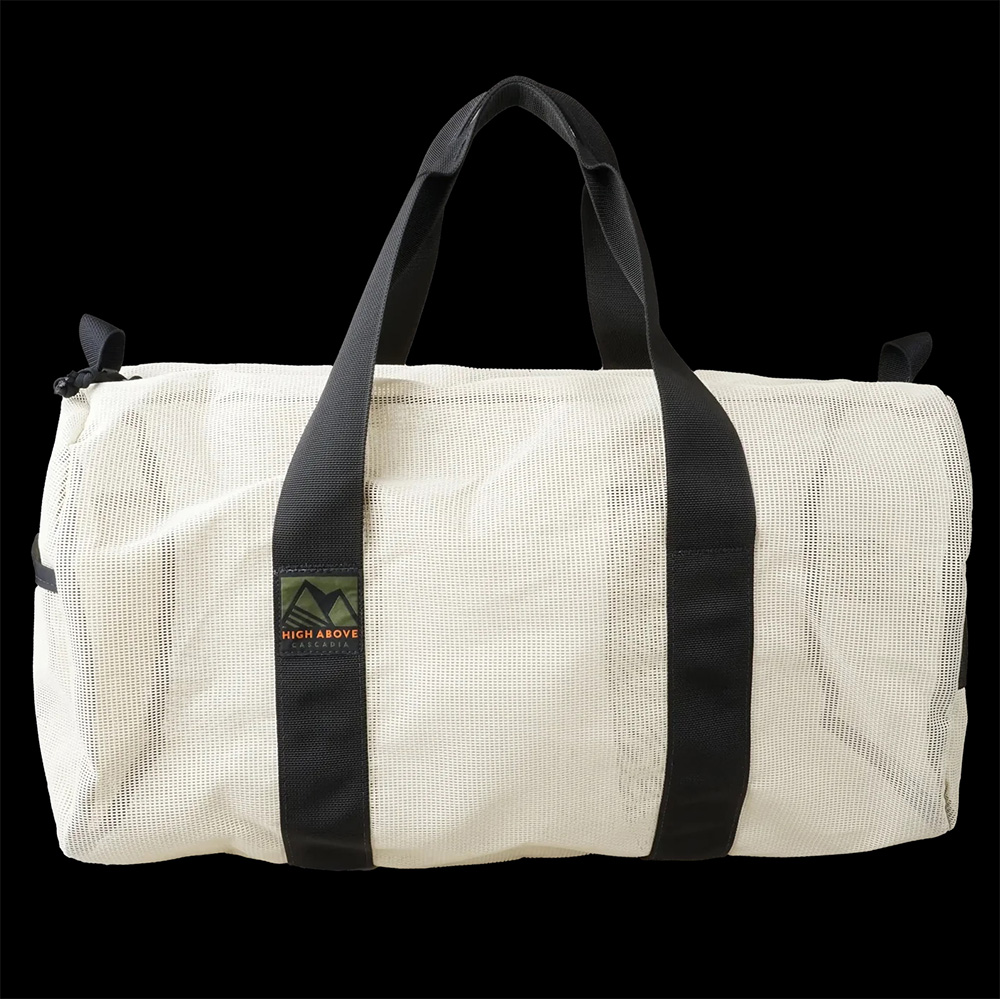
(Of course, this functionality depends on where you’re keeping the duffel and its muddy / wet / sandy contents; if you don’t want that grime to leave the bag, a non-mesh option makes much more sense.)
The Lost Lake Duffel’s mesh material is also see-through, so you can always locate items when the bag is packed full, and the 11’’ x 20’’ (28 x 51 cm) dimensions are just right for most of my day-to-day use cases. It’s a bare-bones design that manages to be elegantly functional. While it’s pricier than many alternatives, High Above makes it in the USA and it’s unbelievably burly — mine doesn’t show a single hint of wear after over a year of heavy use. It’s a good investment in my book.
The North Face Summit Series Pacesetter 7” shorts
MSRP: $75
Jed Doane: Running shorts have a hard job in the mountains — they need to be ultra-breathable and easy to move in, hold some of your small essentials without bouncing around, and also stand up to brush (or the occasional tumble).
In my experience, many of the soft and stretchy running shorts out there disintegrate pretty quickly, especially out on the trails where open knits and highly elastic fabrics can get caught in twigs. The North Face’s Pacesetters shorts are very breathable and lightweight, but their stretch-woven fabric has been much more durable than most other running shorts I’ve tried. As a result, the Pacesetter shorts are my new favorites for running and hiking.
The external short fabric is a 75D stretch-woven polyester with a DWR coating, and it has what I’d call a “swishy” feel that keeps them feeling cool in hot temps. I’ve also found their internal brief liner quite comfortable and breathable.
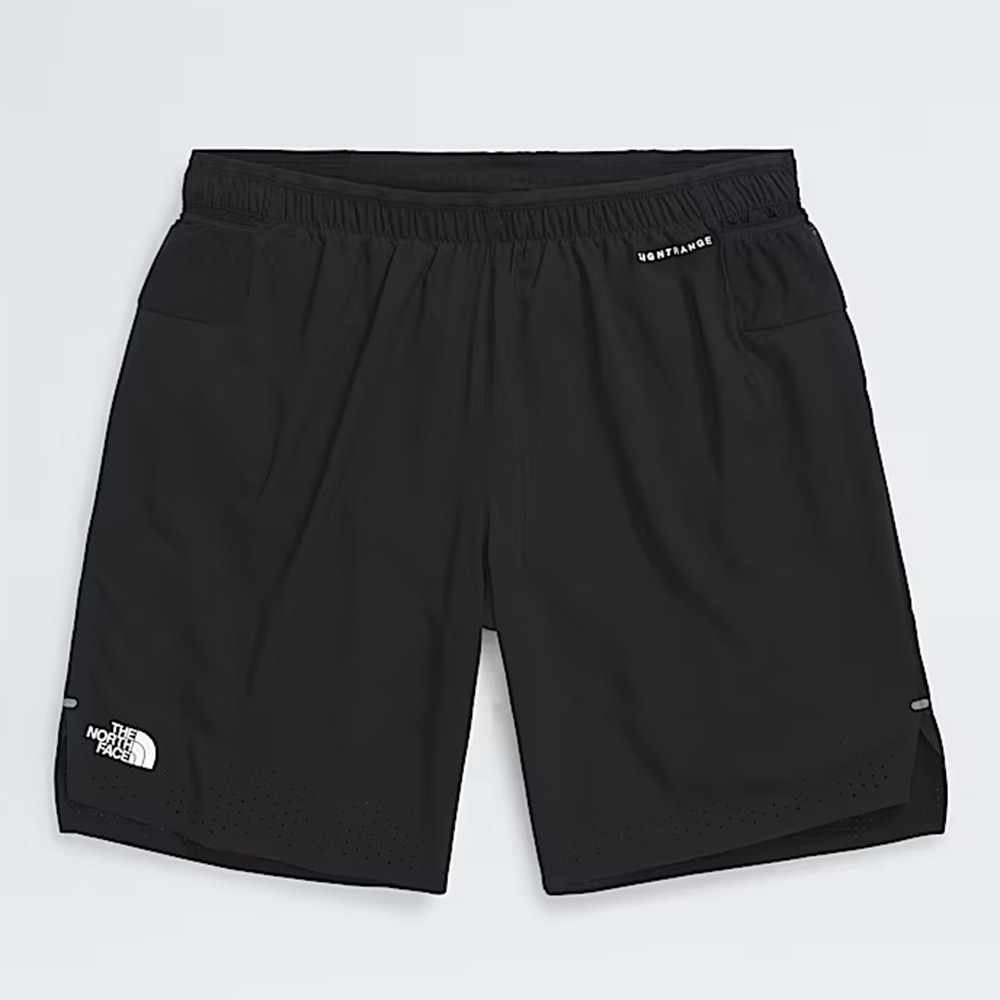
Combined with their simple aesthetic, this has left me grabbing them on city runs and around the house, not just off-pavement outings.
I also love the Pacesetter’s storage options. There’s a back zipper pocket that is large enough to fit a normal-sized iPhone without being so big that the phone moves much during runs. There are also two stretchy mesh pockets on both hips that hold granola bars or an ultralight layer (my Patagonia Airshed Pro jacket fits, but barely), making for the most integrated storage I’ve ever used in a running short.
Overall, the Pacesetter shorts are a solid all-round running option that combines breathability, durability, and functionality into a very versatile setup for warm days.
Strafe Recon Jacket & Pants
MSRP: $269 (jacket) & $269 (pant)
Luke Koppa (5’8”, 155 lbs / 173 cm, 70 kg): I think I’ve tested every version of Strafe’s Recon kit, and despite the changes Strafe has made over the years, I’d put every one of them near the top of my list for touring-specific shells that prioritize breathability far more than maximum weather protection.
(For the full backstory, check out my review of the original Recon kit and the 2nd-generation version.)
I’ve spent several days in the latest Recon kit this spring, and it follows this trend. As with the prior Recon shells, the current one uses a very thin, single-layer stretch-woven fabric that lacks any sort of water-resistant membrane. So, the Recon kit is not waterproof or fully windproof, but I’d much, much rather tour in it than any waterproof shell in scenarios where I don’t expect nasty weather and/or may be dealing with above-freezing temperatures. Even compared to the most breathable waterproof laminates we’ve tested, the Recon’s fabric is in an entirely different league when it comes to breathability.
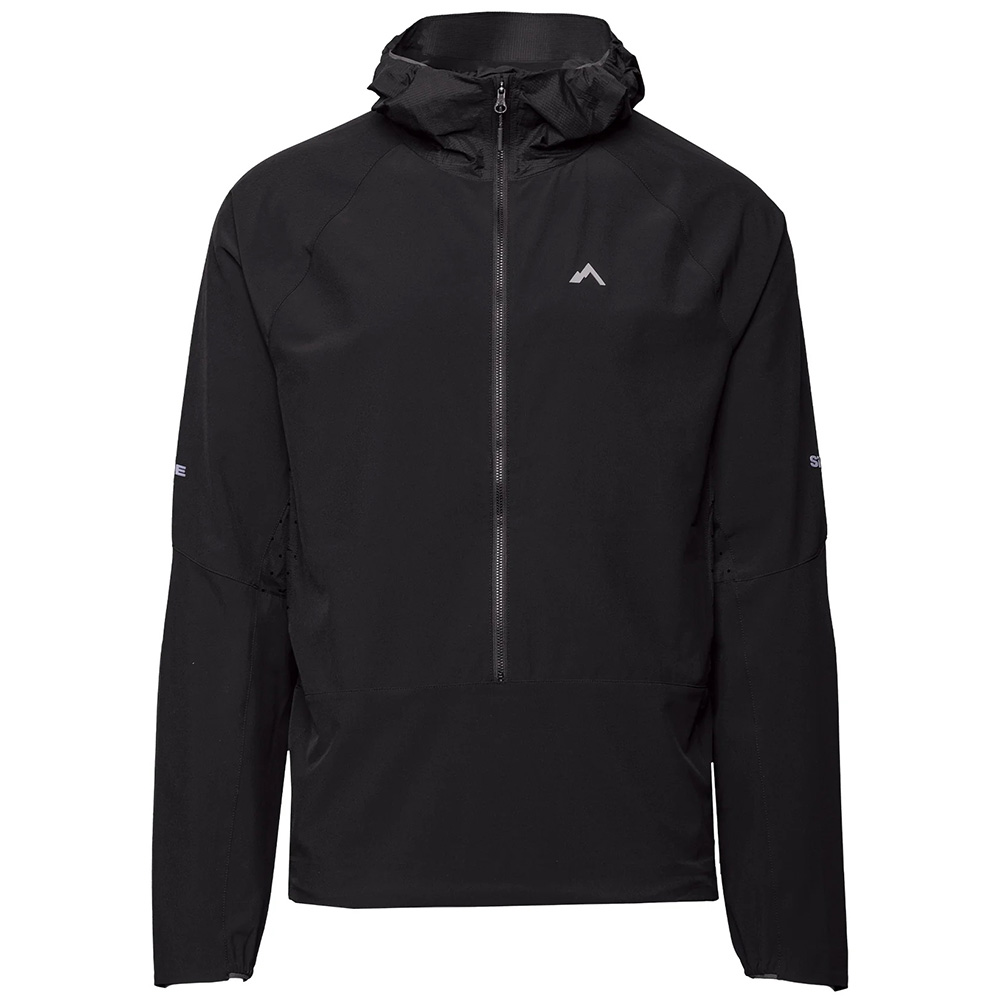
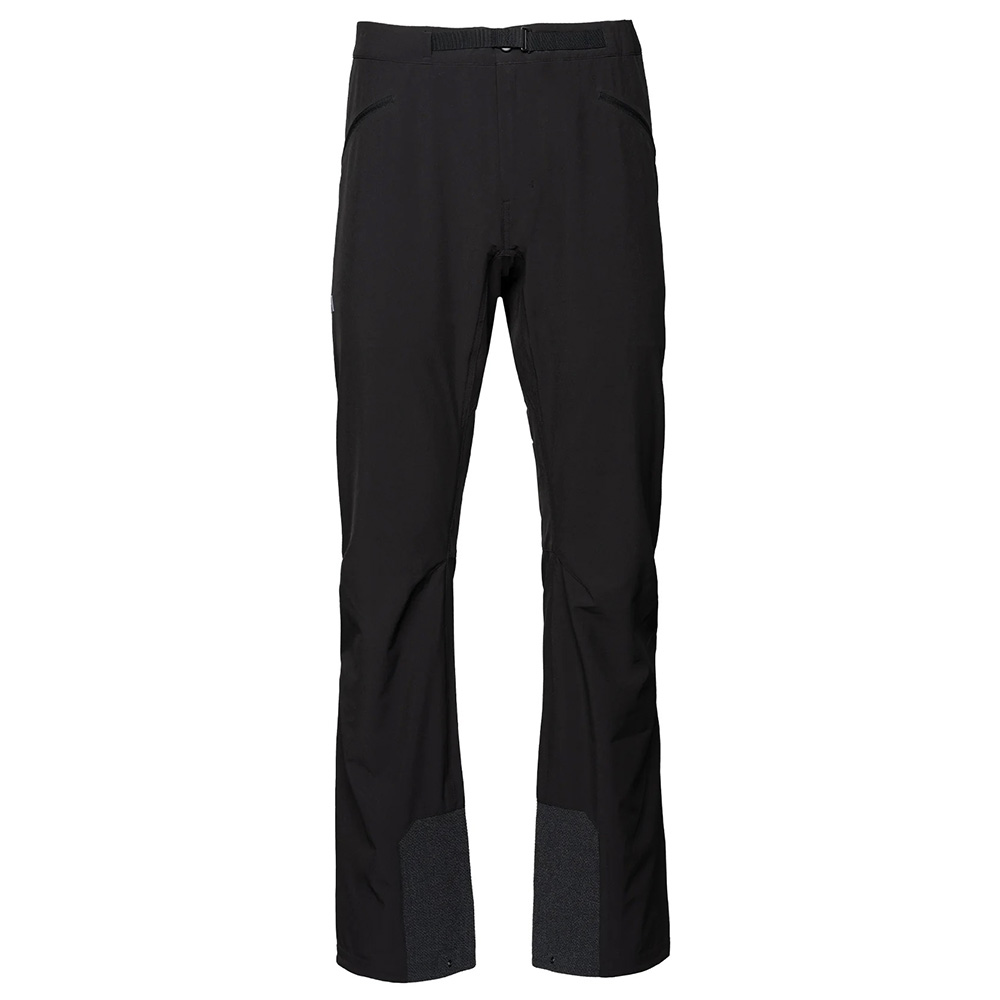
However, a big reason why I’ve loved all the Recon kits is that they provide that exceptional breathability while still offering a useful level of protection against wind and light precipitation. Tossing on the Recon Jacket at a blustery ridge-top transition dulls the bite of harsh gusts almost as well as a traditional windbreaker, and apart from on-resort skinning laps, I almost always have a windproof puffy layer that I can throw over it if the weather gets really bad.
So, what’s new with the latest Recon? The answer is “most of it,” but I think this version of the Recon stands out for similar reasons as its predecessors.
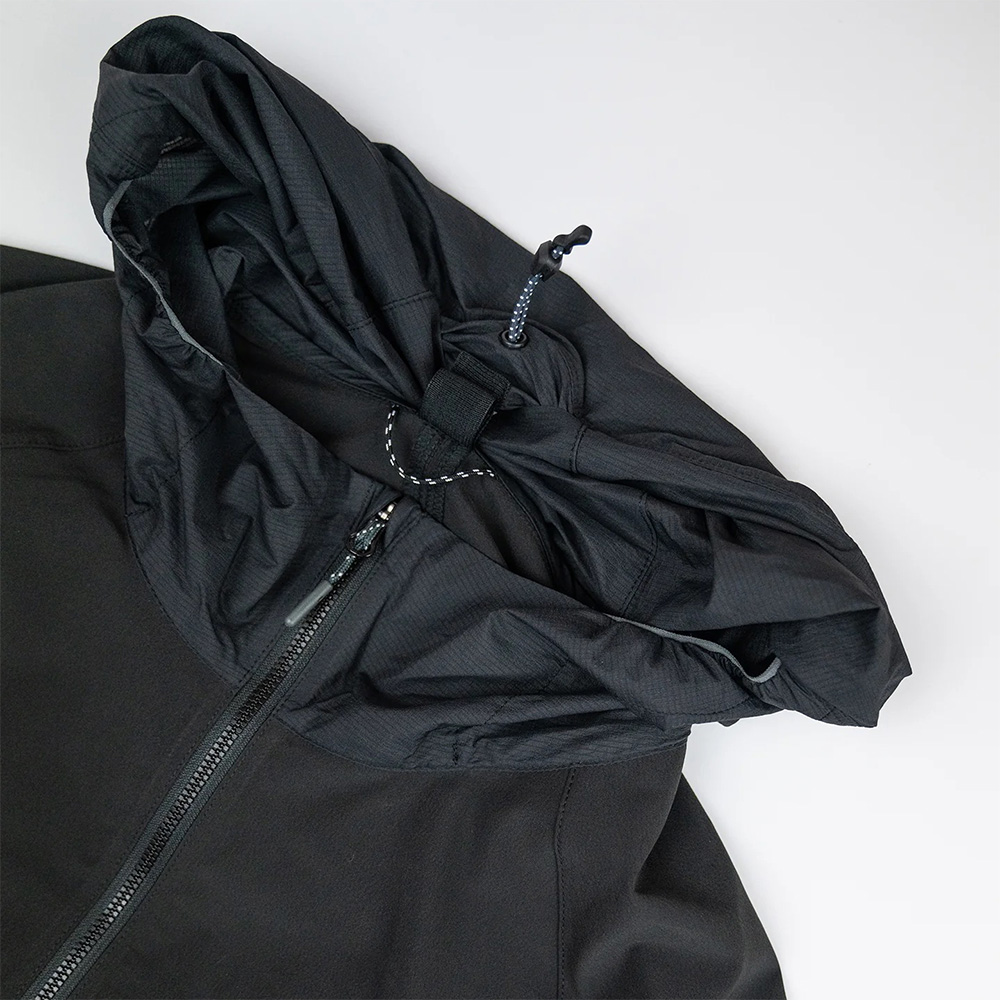
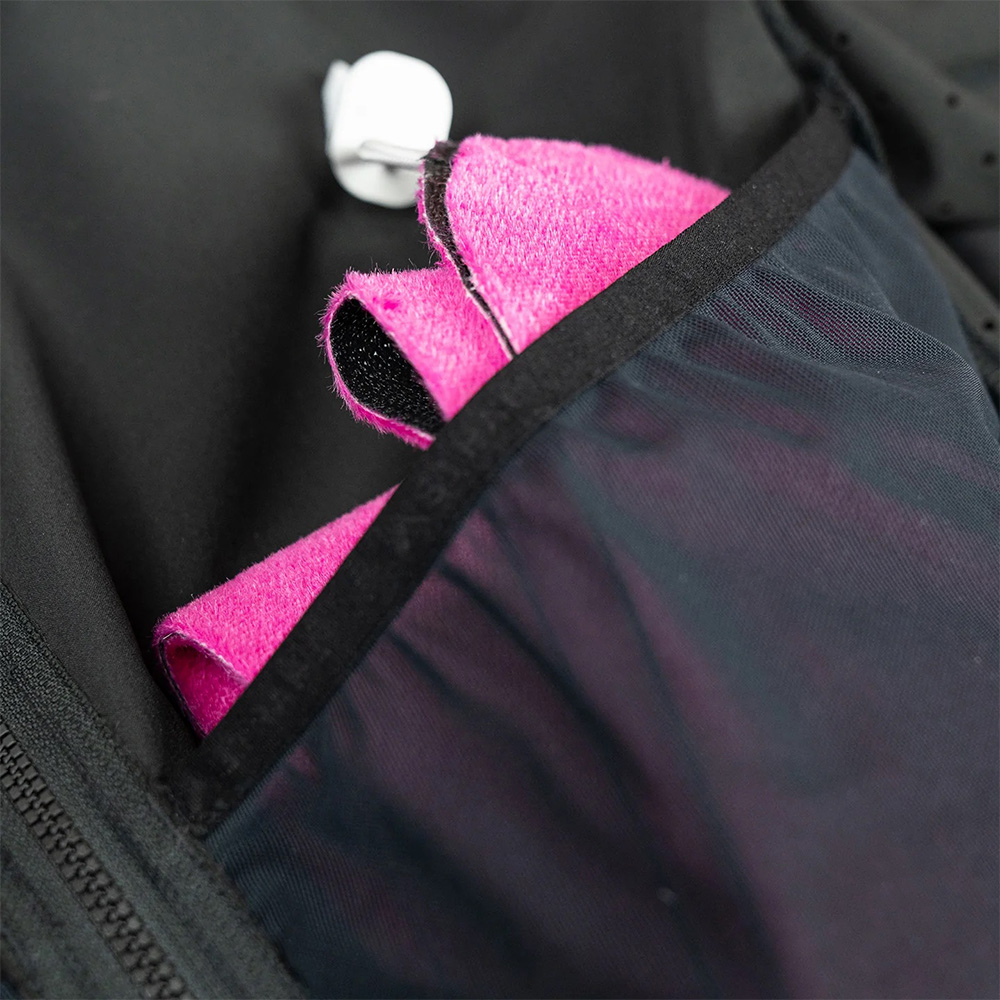
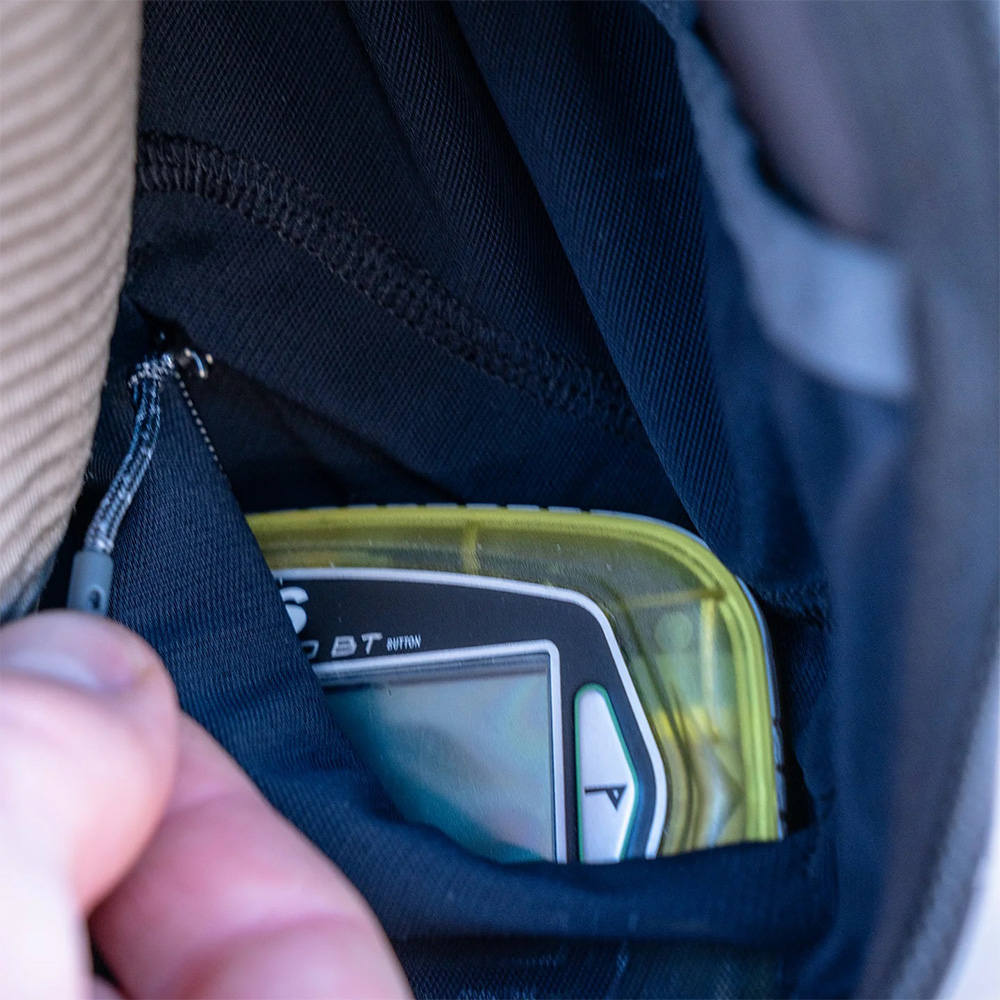
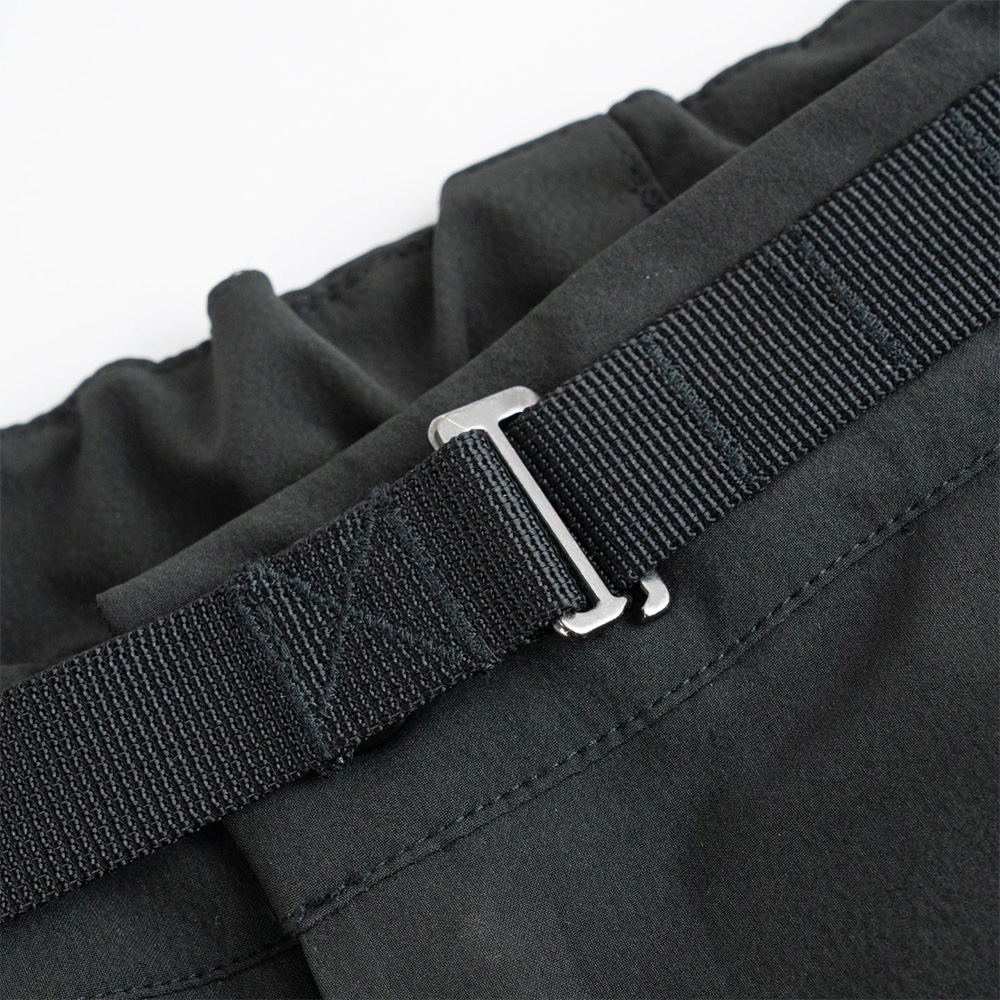
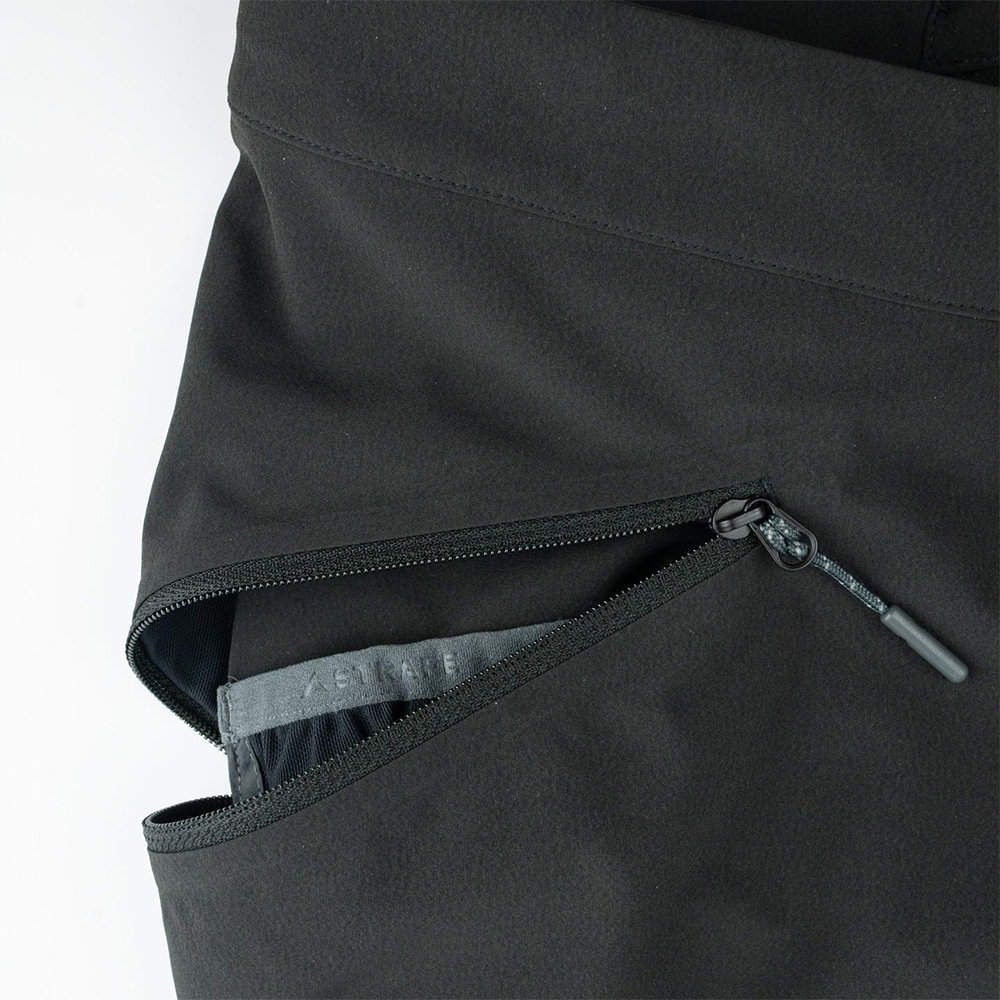
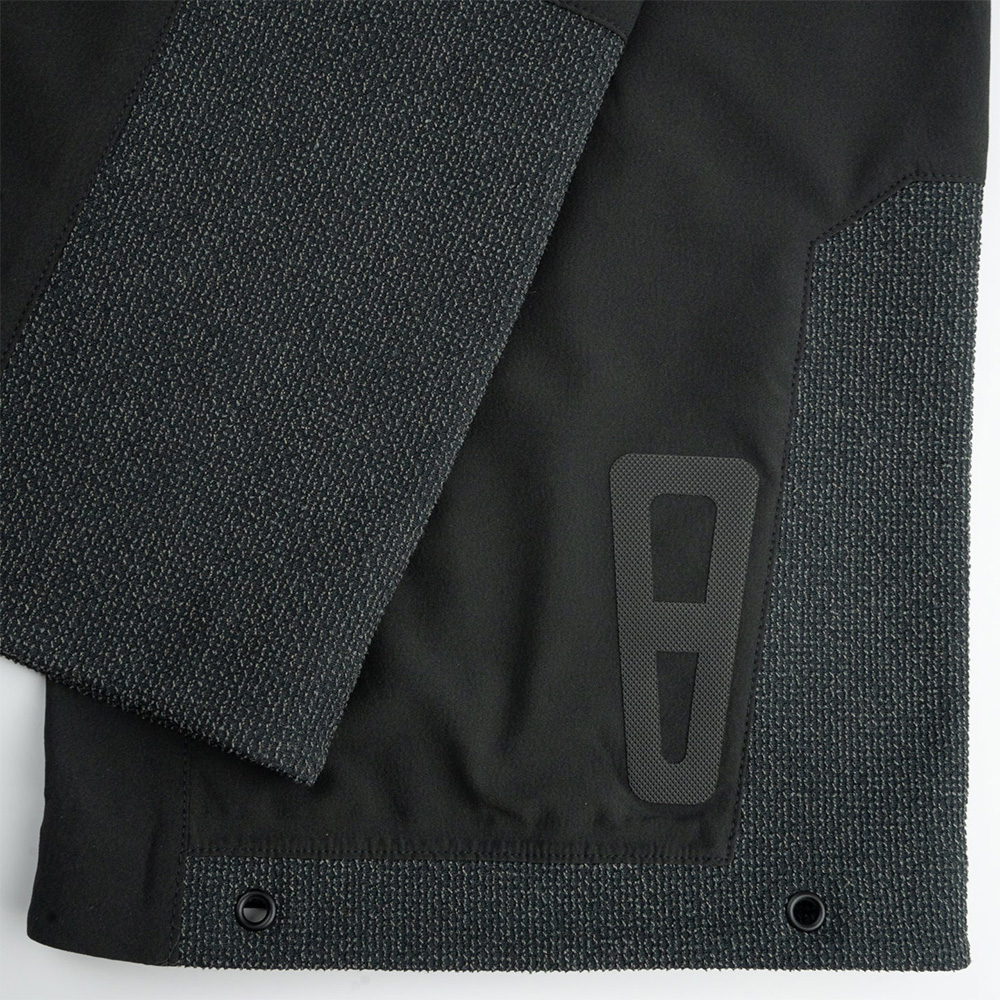
The new fabric is a 147-g/m2 version of Strafe’s stretch-woven Recon fabric, but it’s now treated with the “Brrr” treatment, which makes it feel a bit cooler to the touch on skin. This light, stretchy, and low-friction fabric shares more in common with running shorts than ski shells, and there’s a perforated section on the back where a backpack typically sits.
In terms of notable feature updates, the revised Recon Jacket now features a ¾-length zip front closure that has a snap midway down if you don’t want it to blow open when wearing it unzipped. The fabric already breathes so well that I rarely leave it unzipped, but the depth of the zipper makes it easier to access the interior zippered pocket and dual interior drop-in skin pockets. The fact that it’s not a full-length zip leaves me with a bit less bulk under a backpack’s hip belt or climbing harness, and it’s so breathable that I almost never take it off throughout a tour.
Those two skin pockets are my favorite update from the previous Recon Jacket; with the new one, I can skin at the resort sans-backpack with skins cut for skis around 105 mm wide x ~185 cm long. I very rarely used the exterior torso pocket on the prior-gen Recon Jacket, but I’ve found plenty of use for the new version’s three interior pockets.
I also appreciate that Strafe added some slightly more protective Pertex Equilibrium double-weave fabric around the hood of the Recon Jacket; this makes it a bit more functional when you want to protect / warm up your ears. The hood is very minimal, but I can quickly snug it down fairly well over a ball cap or helmet, and you can roll and stow it via a little snap if you don’t want it blowing in the wind.
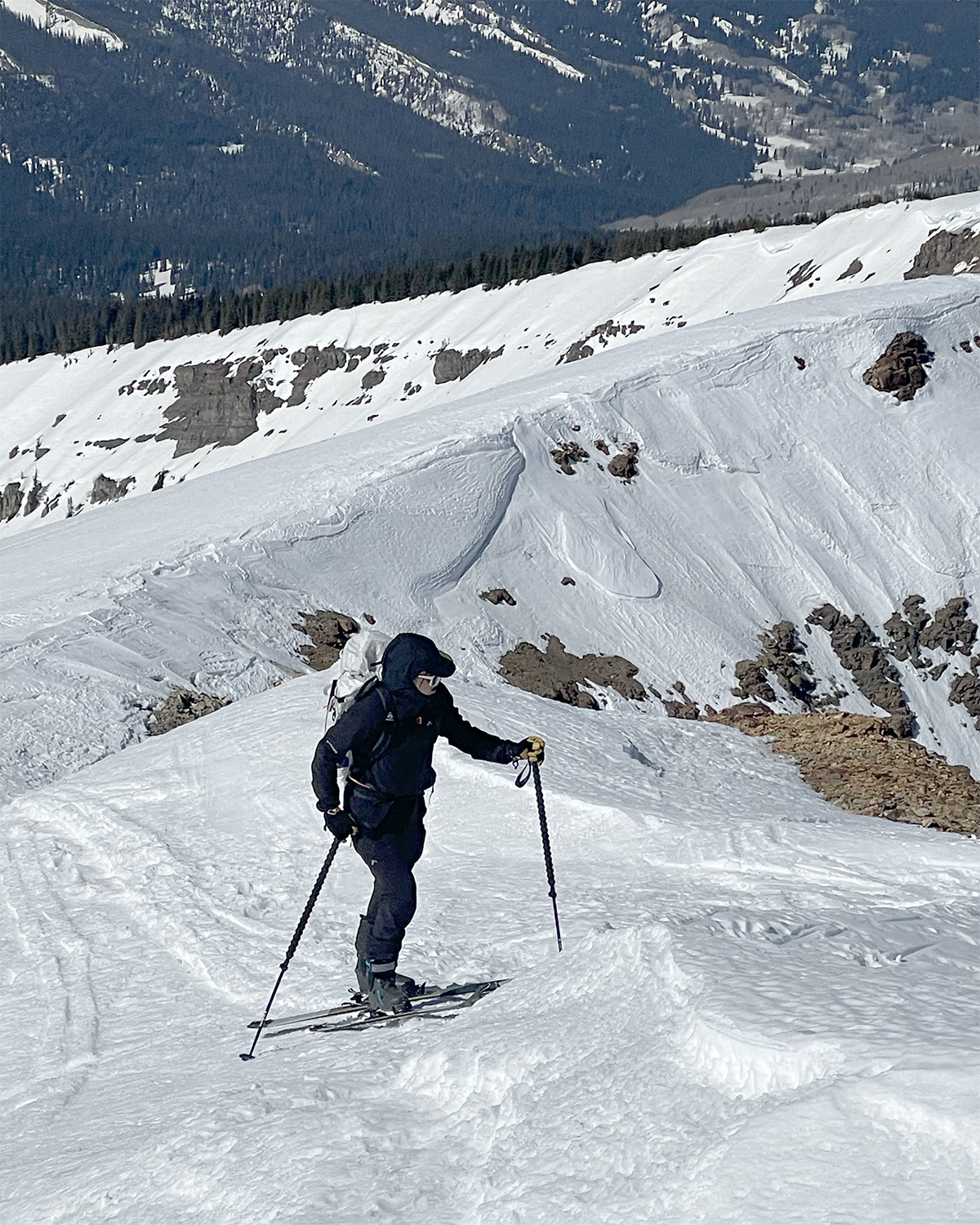
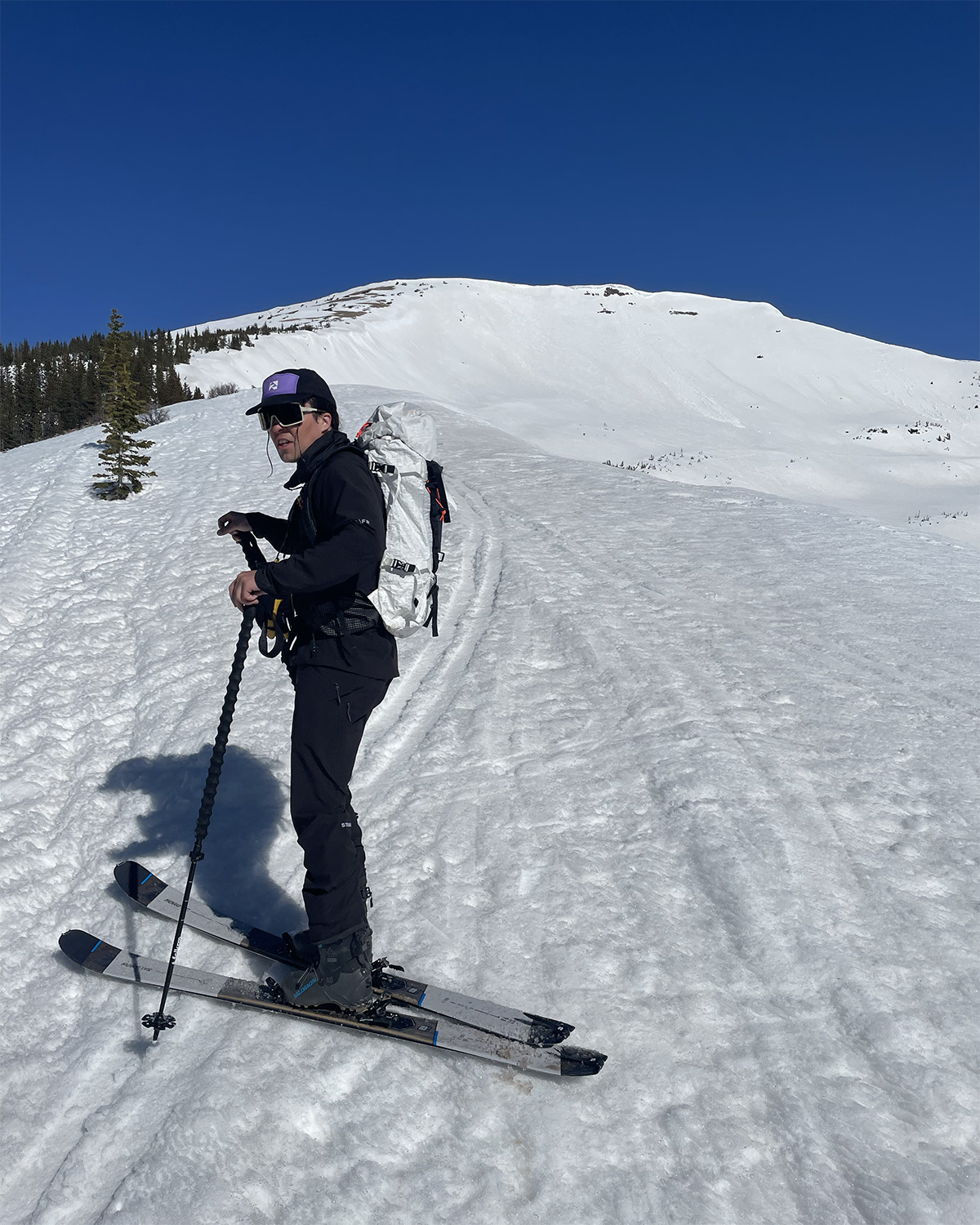
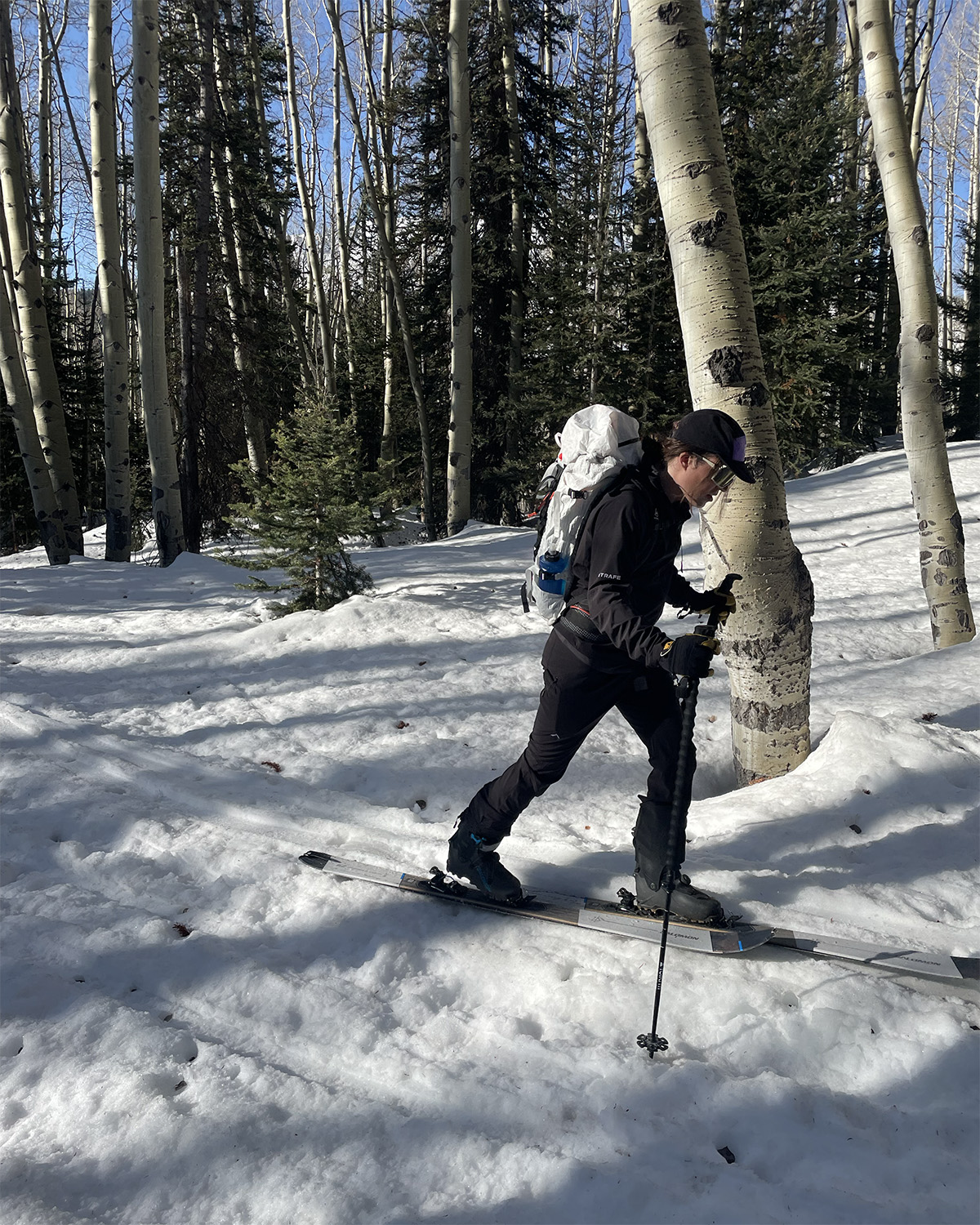
The Recon Pant’s features didn’t get quite as big of an update, but that’s fine by me. It still features dual hand pockets that can swallow skins for most skis under roughly 100 mm x 185 cm, and both of those pockets have elastic drop-in sleeves sewn inside to more securely hold a phone, wallet, etc.
(Shoutout to Strafe for adding that little sleeve in both pockets, rather than just one. Especially on light and stretchy pants, I almost always prefer to stash small, dense objects in these sorts of sleeves to reduce bounce-age.)
The Recon Pants still feature short hamstring vents; I don’t use them that often, given how well the fabric breathes on its own. But the vents also haven’t bothered me at all and don’t add much bulk or weight, so I guess more ventilation is nice to have when it’s really hot.
I love that the Recon Pants feature Scholler Keprotec Kevlar cuff guards that are properly large and actually functional when it comes to reducing the chances of cutting the pants with a ski edge, crampon, etc. That’s almost always the first area where I end up with holes — even with super burly resort pants, let alone ultralight softshells like the Recon. Strafe also added a reinforcement on the back of the leg where your boot’s walk mode is likely to sit (and rub) in uphill mode, and you can cut out the middle of that reinforcement if you want to run your walk lever through the pants.
Rounding out the feature set are a simple, low-profile, and effective integrated belt on the pant, cuff grommets for bungee-cord stirrups, elastic sleeve cuffs that I can pull over thin gloves, and a single-pull drawcord at the jacket’s hem.
And now we get to the part that some folks will love and others won’t — the fit of the Recon Jacket and Pants. With each iteration, Strafe has made this kit a bit slimmer and more skimo-like, and the current version puts my underdeveloped glutes on display more than I personally prefer. It’s not a speed-suit tight, but the latest Recon fits more similarly to options in the skimo world than Strafe’s much roomier, more freeride-inspired shells.
Now, I think Strafe did a very impressive job of making a slim-fitting kit that feels very unrestrictive while on the move — the stretchy, slippery fabric combines really well with lots of targeted articulation throughout the patterning of this kit. And it leaves more to the imagination than many of the vacuum-sealed alternatives in the traditional skimo world. But if Strafe opted to make a baggier version (particularly through the pant legs), I’d be the first in line to place an order.
Personal fit preferences aside, the Strafe Recon Jacket and Pants are extremely breathable pieces that offer a useful level of minor weather protection and a minimal-yet-functional feature set. They’ll continue to be what I reach for when I’m headed for the skin track on days when there isn’t tons of precipitation in the forecast.
Party Shirt International Kids Cabana Shirt
MSRP: $40
Kristin (& Linden) Sinnott: Since the Party Shirt International Kids Cabana Shirt arrived, my son and I have been eagerly awaiting warmer temperatures so he could wear it. The graphics are amazing; the shirt is soft, lightweight, and flowy; and the 6-year size is a great fit for my 42 lb, 45 in (19 kg, 114 cm) 6-year-old.
We recently went to Costa Rica for vacation, and the Cabana shirt was perfect for our friend’s beach wedding, where the weather went from hot and humid to warm and rainy, and then a coolish night of dancing. The fabric is lightweight and loose, which helps keep the shirt from sticking to my son when he gets hot. And the shirt dried fairly quickly after the rainstorm passed. He wore the shirt multiple times on the trip and received many compliments.
(Also worth noting: if you’re a BLISTER+ member, you have access to a discount on Party Shirt International — find it via the Member Clubhouse. I plan to use that discount to get my husband a shirt for his birthday — and there’s a good chance I’ll buy one for myself so we can all match. The jellyfish design is really fun.)
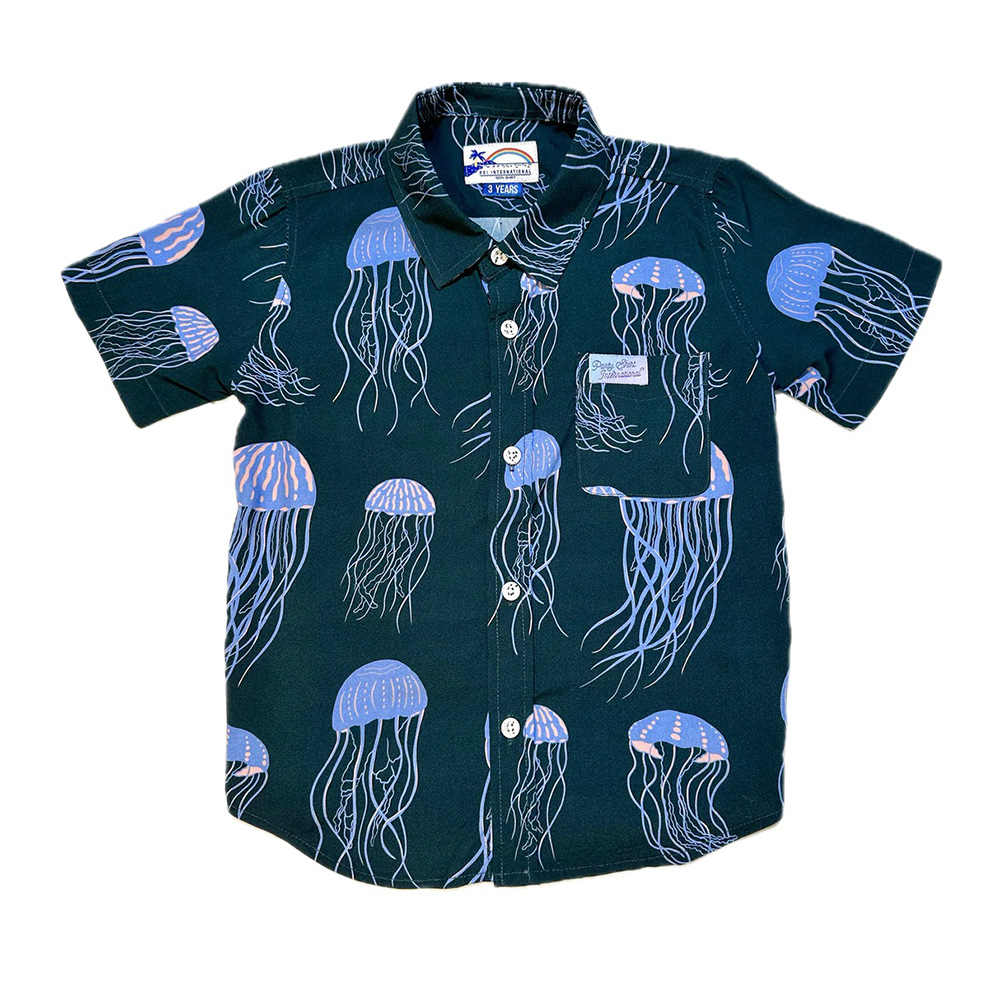

Chris King Centerlock Lockrings
MSRP: $25
David Golay: I, frankly, prefer six-bolt rotor mounts to Centerlock ones. Bolts are easy to work on, ubiquitous, can be worked on trailside with a multi-tool, and offer redundancy in the mounting interface (instead of the single point of a Centerlock setup).
But as a reviewer, I wind up needing to use Centerlock wheels and rotors with some regularity, and Chris King’s lockrings are nicer than most.
Realistically, a big part of the King lockrings’ appeal will be to folks who want a little bit of color-matched bling for their bikes; as a fan of the Henry Ford approach to color options, I don’t care about that part one bit. But I do care about functionality, and the Chris King lockrings have a couple of points in their favor there.
The biggest one is that they feature deeper splines for the tool interface than a lot of other options. That makes it much easier to get a good purchase and not slip the tool on the splines (vs. lockrings with shallower splines), and Chris King also seems like they’ve toleranced the dimensions of the splines more tightly than average.
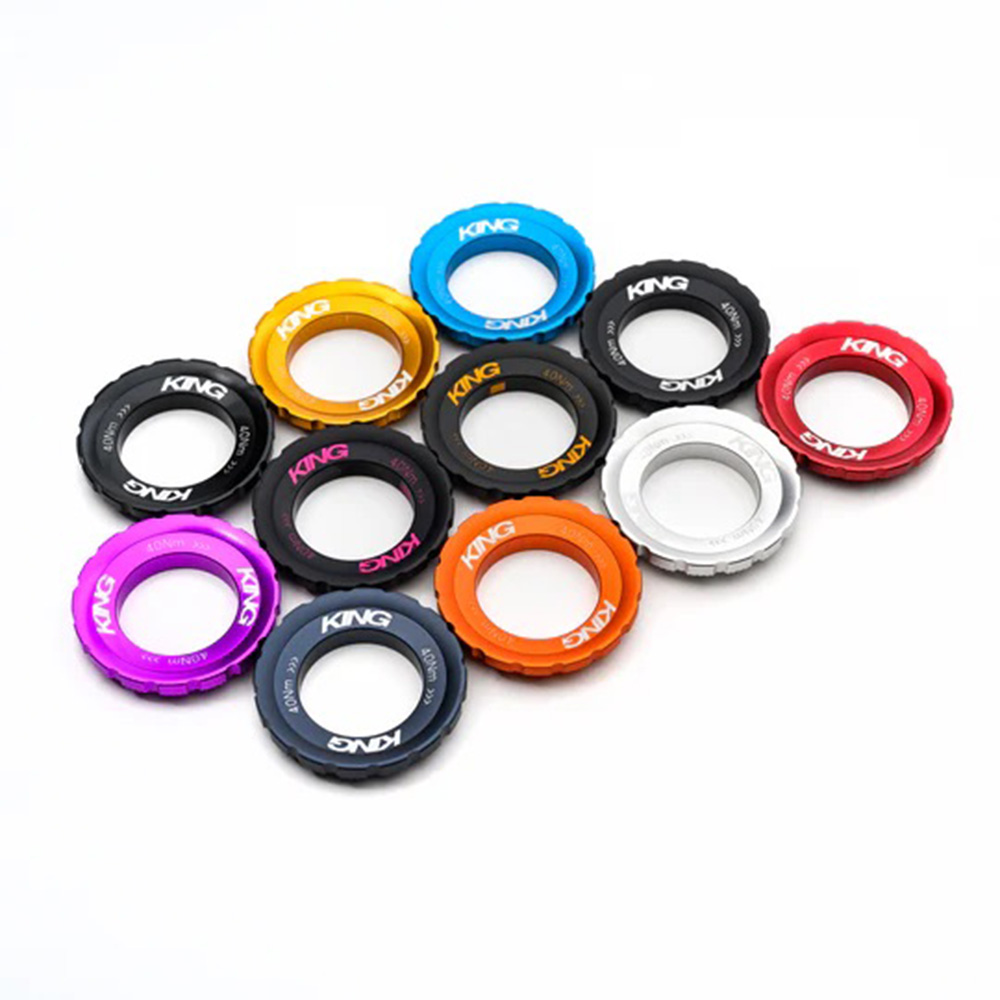
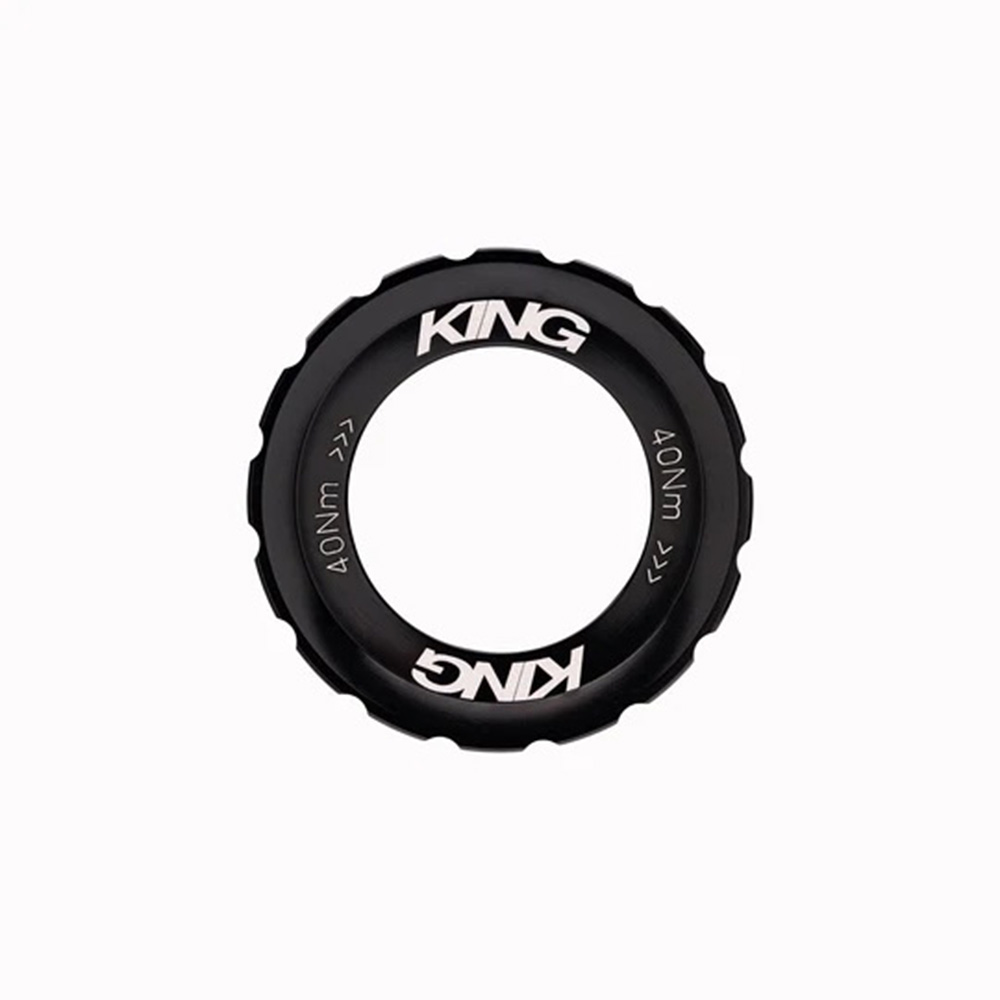
With looser tolerances, a lockring needs to err on the side of being slightly undersized to avoid potentially not fitting into a tool due to tolerance stackup. The Chris King ones fit in all of the different 16-spline bottom bracket tools I have in my arsenal more snugly than any other lockrings I have on hand.
Chris King notes that the slight added thickness of their lockrings might cause issues on certain drop-bar bikes; it’s not remotely close to being an issue on a mountain bike frame or fork, but if your road / gravel frame requires an internally splined lockring, they won’t work. But that slight limitation aside, they’re the nicest Centerlock lockrings to use that I’ve encountered to date. And, yes, you can get them in Chris King’s full color palette if that’s your thing. I’m happy with black, but you do you.
Cotopaxi Brinco Shorts
MSRP: $70
Zack Henderson: I’m a big fan of “do it all” shorts during the summer months. E.g., I’d like to be able to take them on a hike or a swim without having to worry about them holding moisture for very long afterward (and the chafing that comes with it).
I’ve rocked Patagonia’s famed Baggies for a while, but the Cotopaxi Brinco shorts have replaced them as my new favorite. I received the 5’’ length option as a gift, and have used them a ton. They dry quickly and the cut is dialed for my preferences (not quite as voluminous as Patagonia Baggies). The Brinco’s fabric is also a lot more comfortable and soft than most of the comparable options I’ve tried from other brands. The colorways are also generally a little more subtle than some of the wild options for Cotopaxi’s other clothing, which suits my style a bit more.
Cotopaxi’s other perks include their major commitment to sustainable and ethical manufacturing practices, lifetime repairs, and their trade-in program. The Brinco Shorts seem very well made, and I expect my pair to last a while — though I’ll likely need another pair to keep up with how much I’m wearing them going into spring and summer.
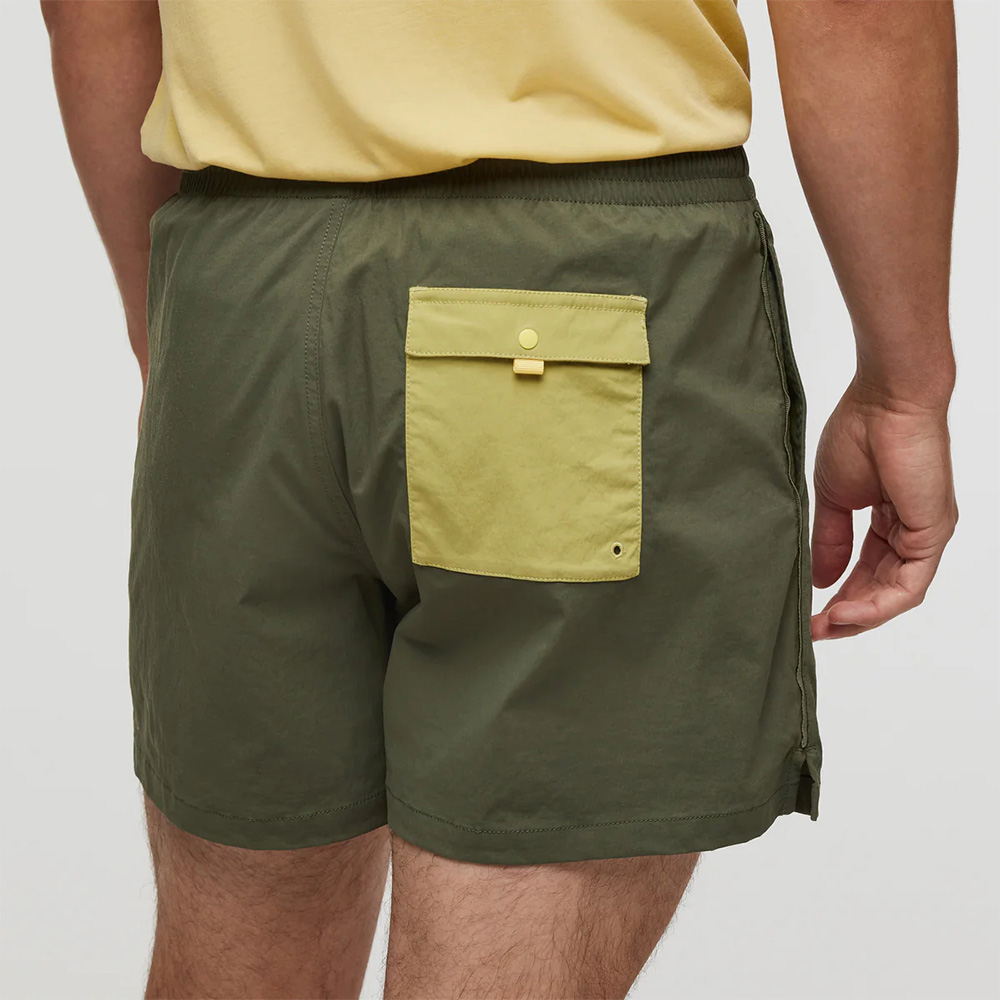
Stio Women’s Dawner Hooded Jacket
MSRP: $229
Kristin Sinnott: Spring has arrived in Crested Butte, which means I can put away my favorite extra-warm, puffy jackets and start wearing some lighter layers. I’ve already been using Stio’s Dawner Hooded Jacket as a technical sweatshirt / midlayer all winter long, but in the warmer months, I love wearing it as my sole, lightly insulated layer. I have the size Medium, and the fit is great for layering under a shell or over most baselayers (I’m 5’8”, 135 lbs / 173 cm, 61 kg).
The Dawner Hooded Jacket features a stretchy and air-permeable face fabric that’s lined with 100-g “Octa” insulation, which is a soft, low-density fleece-like insulation that feels good against bare skin. Similar to some other comparable active insulators, I’ve found the Dawner Hooded Jacket and its Octa insulation to hit a nice sweet spot of warmth and breathability for cool shoulder-season activities (as an outer layer), as well as midlayer use in colder winter temps.
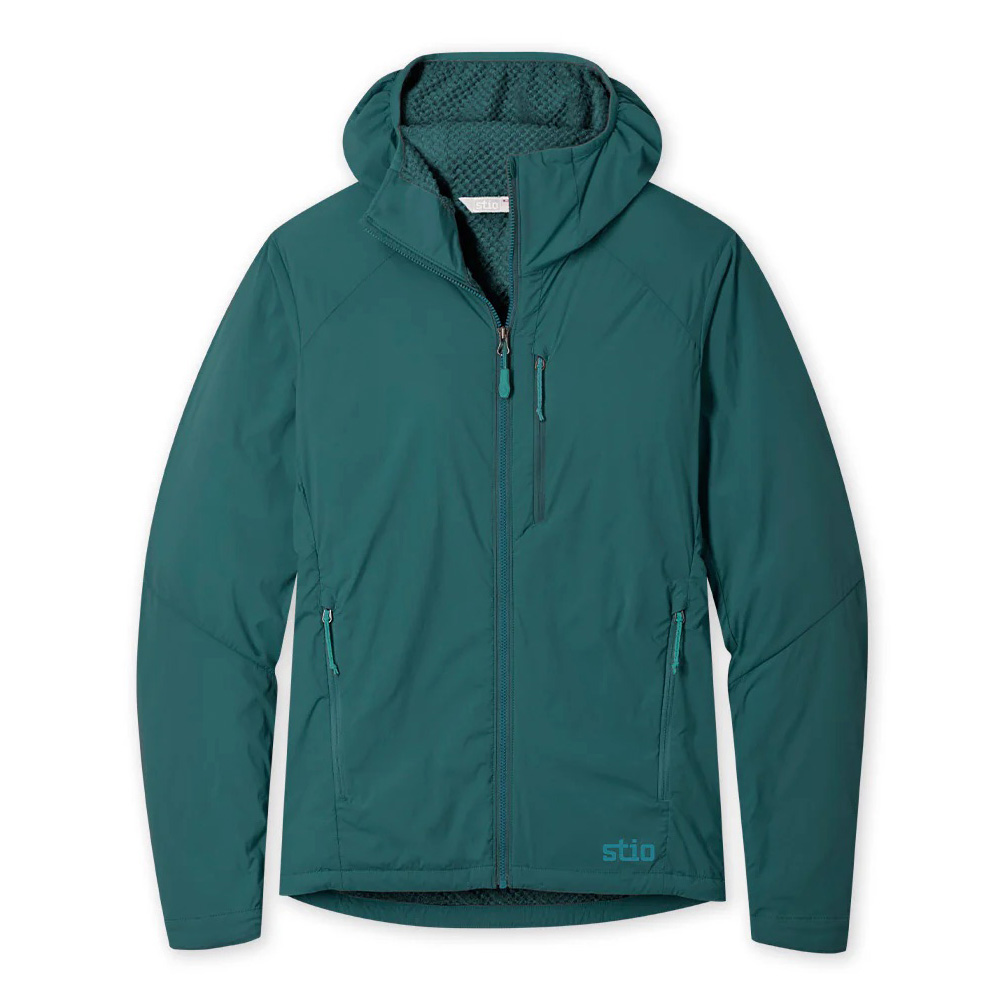
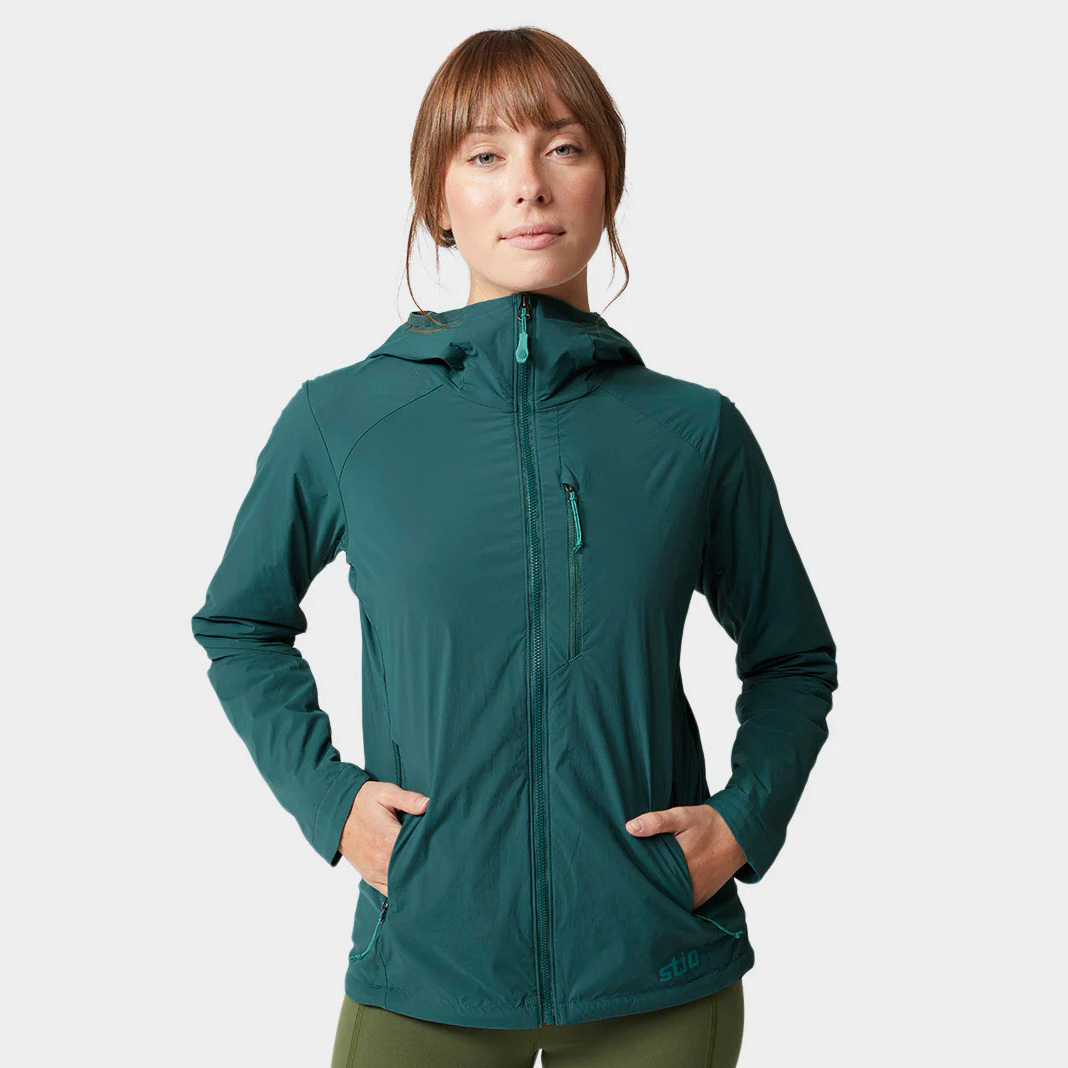
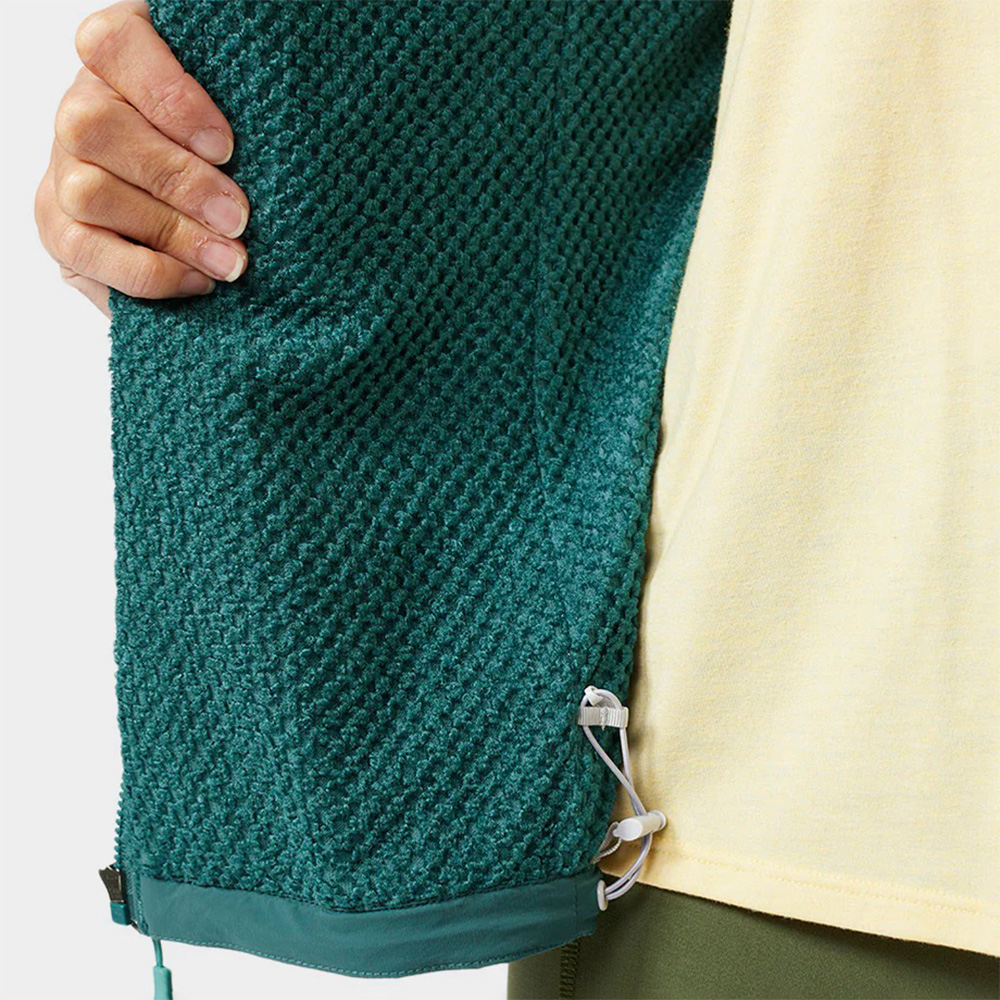
The jacket compresses into its pocket for easy storage in a backpack or luggage, and its face fabric provides a bit of wind and water resistance in moderate conditions (i.e., better than a traditional fleece, but far from a waterproof shell).
From travel days to days spent exploring the mountains, the Dawner Hoooded Jacket has proven to be a great layer.


